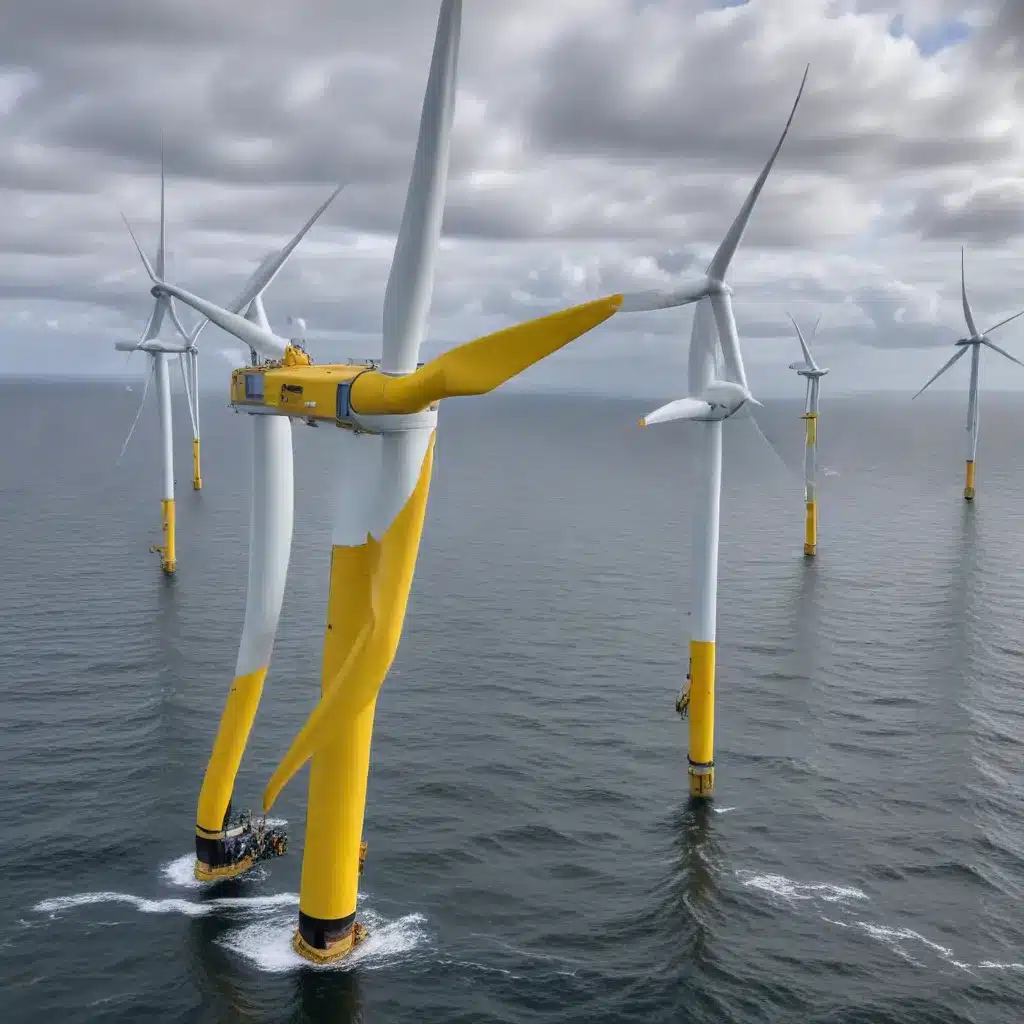
The global transition to renewable energy is rapidly gaining momentum, with offshore wind emerging as a key player in Europe’s ambitious clean energy transformation. As countries across the continent work to meet their net-zero goals, the offshore wind industry has experienced remarkable growth, overcoming technological barriers and logistical hurdles to harness the vast, untapped potential of coastal wind resources.
Emerging Trends and Developments
The European offshore wind sector has witnessed a surge of activity in recent years, driven by a combination of supportive policies, technological advancements, and growing investor confidence. According to the International Energy Agency (IEA), global annual renewable capacity additions increased by almost 50% to nearly 510 gigawatts (GW) in 2023, setting a new record. Within this trend, offshore wind has played a significant role, with Europe leading the charge.
The European Union, in particular, has set ambitious targets for offshore wind deployment, aiming to reach 300 GW of installed capacity by 2050. This vision is underpinned by initiatives such as the Global Offshore Wind Alliance (GOWA), a collaborative effort between Denmark, the International Renewable Energy Agency (IRENA), and the Global Wind Energy Council (GWEC) to accelerate the global uptake of offshore wind.
Regulatory and Policy Frameworks
Across Europe, governments have implemented a range of policies and incentives to support the growth of the offshore wind industry. These include feed-in tariffs, tax credits, and power purchase agreements (PPAs) that provide long-term revenue certainty for project developers. Additionally, streamlined permitting processes and coordinated planning for offshore grid infrastructure have been instrumental in driving progress.
However, regulatory challenges remain, particularly in navigating environmental impact assessments and obtaining necessary approvals. Balancing the need for renewable energy deployment with the protection of marine ecosystems has emerged as a critical priority, with policymakers and industry stakeholders working to develop robust frameworks that address these concerns.
Infrastructure and Grid Integration
The successful deployment of offshore wind projects requires a well-developed infrastructure, including purpose-built installation vessels, port facilities, and grid connectivity. Europe has made significant strides in this regard, with countries investing in modernizing their maritime infrastructure and expanding their offshore transmission networks.
Innovative approaches to grid integration, such as the development of hybrid projects that combine offshore wind with other renewable technologies, are also gaining traction. These integrated systems can enhance the reliability and flexibility of the energy grid, helping to accommodate the variable nature of wind power.
Logistical and Supply Chain Challenges
Despite the industry’s progress, logistical and supply chain obstacles remain a key concern. The limited availability of specialized vessels for turbine installation and cable laying has proven to be a bottleneck, leading to project delays and cost overruns. Addressing these constraints through strategic infrastructure investments and international collaboration will be crucial for the continued growth of the offshore wind sector.
Furthermore, the global supply chain disruptions and inflationary pressures experienced in recent years have impacted the cost of wind turbine components and other critical materials. Manufacturers and project developers are working to diversify their supply sources and explore innovative solutions to mitigate these challenges.
Environmental and Social Impacts
The development of offshore wind projects has far-reaching environmental and social implications that must be carefully considered. Rigorous environmental impact assessments are conducted to ensure the protection of marine habitats, migratory bird patterns, and other sensitive ecosystems. Moreover, meaningful engagement with local communities, addressing concerns around visual impacts and potential disruptions to maritime activities, is essential for securing social acceptance and long-term sustainability.
Leading offshore wind companies are increasingly embracing the principles of the blue economy, which emphasizes the sustainable use of ocean resources. This includes initiatives to minimize the environmental footprint of their operations, foster biodiversity, and create economic opportunities for coastal regions.
Financing and Investment Opportunities
The offshore wind industry has attracted significant investment, with project developers and financial institutions recognizing the long-term potential of this renewable energy source. However, the capital-intensive nature of offshore wind projects, coupled with the macroeconomic challenges of higher interest rates and inflation, have created barriers to securing financing.
Innovative financing models, such as green bonds, project bonds, and public-private partnerships, have emerged to address these challenges and unlock additional investment. Governments and multilateral institutions are also playing a crucial role in de-risking projects and providing access to concessional financing, particularly in emerging markets.
Research and Innovation Initiatives
Technological advancements and continuous research and development (R&D) are essential for driving the offshore wind industry forward. Initiatives such as the U.S. Department of Energy’s Floating Offshore Wind Shot are aimed at developing innovative solutions for deep-water wind turbine foundations, improving manufacturing processes, and enhancing grid integration.
In Europe, collaborative R&D efforts are focused on areas like digital twin technologies, predictive maintenance algorithms, and next-generation turbine designs. These innovations are expected to optimize project planning, reduce operational costs, and unlock new frontiers of offshore wind deployment.
Conclusion
As the world accelerates its transition to a sustainable energy future, Europe’s offshore wind industry stands as a shining example of what can be achieved through a combination of policy support, technological innovation, and collaborative effort. By overcoming logistical hurdles, addressing environmental concerns, and unlocking new financing avenues, the sector is poised to play a pivotal role in Europe’s clean energy transformation and the global fight against climate change.
To learn more about the latest developments in the European offshore wind industry, visit the European Future Energy Forum.







